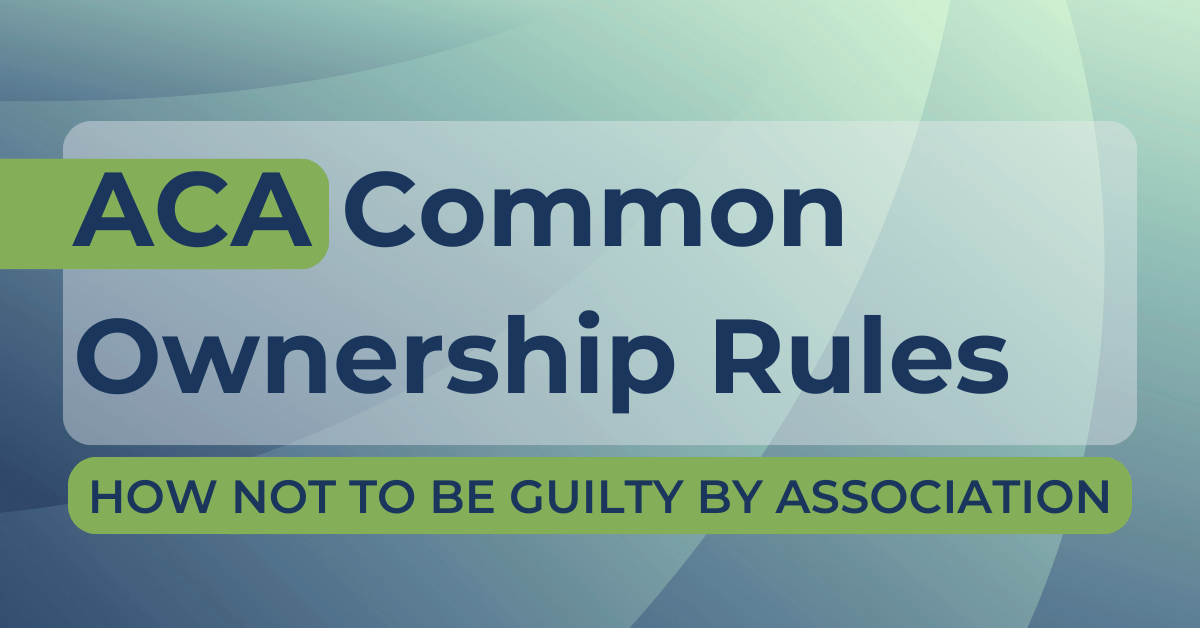Just the other day, I had one of those parenting moments we all know too well—talking to my child about getting in trouble at school. His explanation? “I wasn’t doing anything wrong!” It’s funny how that excuse never changes. It brought me back to my own childhood when I’d get in trouble for chatting with friends and think, “Why me?”
In business, the stakes are much higher. When it comes to ACA Common Ownership, being part of a group can mean serious consequences, even if you feel you did nothing wrong. Understanding these rules can save you from a lot of unnecessary trouble, and that’s what we’ll get into today.
What is ACA Common Ownership
Under the Affordable Care Act (ACA), if multiple companies have common ownership, the employees within those companies are combined to determine if the group as a whole is considered an Applicable Large Employer (ALE)—a company with 50 or more employees. You can read more about what it means to be an ALE here or here.
There are two main relationships that determine common ownership: the parent-subsidiary relationship and the brother-sister relationship.
The Parent-Subsidiary Relationship
In a parent-subsidiary group, a group of companies is connected through common stock ownership, where 80% of the stock of each company is owned by one or more companies within the group.
How It Works
For example, ABC Inc. owns 90% of Black Inc., 80% of White Inc., and 65% of Blue Inc. Because ABC Inc. owns 80% or more of Black Inc. and White Inc., ABC Inc., Black Inc., and White Inc. are part of a Parent-Subsidiary Group. Blue Inc. is not part of this group because the controlling parent, ABC Inc., does not own at least 80% of the stock.

The Brother-Sister Relationship
A brother-sister group is different from a parent-subsidiary group because it involves more than just common stock ownership.
In a brother-sister group, two or more companies are considered part of a controlled group if five or fewer common owners directly or indirectly own a controlling interest in each company AND have effective control.
How It Works
Controlling interest is established when the common owners have at least 80% ownership in each company. Effective control is determined when the identical ownership (the lowest percentage of ownership each person has in the group) of each company exceeds 50%.
Let’s look at an example to see what this looks like.

In this case, a controlled group is not created because effective control is not established. While all four individuals own more than 80% of the interest in both companies, they do not own more than 50% of the companies when considering only the identical level of ownership each has in the business.
As you can see, the brother-sister relationship can get complicated pretty quickly!
What Does This Mean for Your Business?
According to the IRS, when a controlled group is identified, the entire group is considered to determine if it qualifies as an ALE.
If the group is classified as an ALE, an affordable offer of health insurance coverage must be made to all eligible employees within the group.
Beyond ACA, the IRS also applies ERISA regulations to the controlled group as the entire group is treated as a single employer.
Get Compliance Right
Anytime you have a group of entities that share common ownership, it's important to evaluate parent-subsidiary and brother-sister relationships to make sure all compliance requirements are handled appropriately. This is something to keep in mind as your business grows and you consider having a separate legal entity for your employees. At Whirks, we help our clients stay compliant with the ever-changing regulations every day.
Reach out to us if you need help or check out our article “The 3 Common Payroll Mistakes Small Business Owners Make” to keep learning more!


